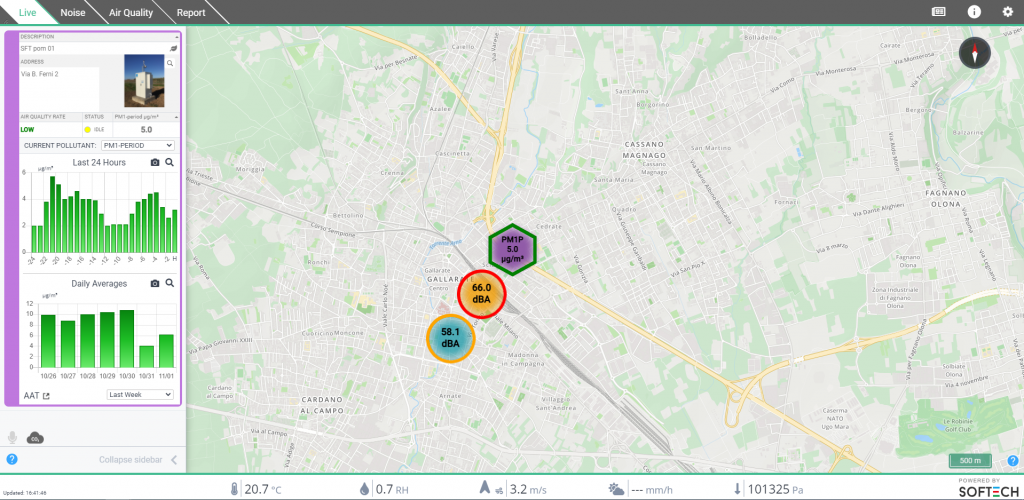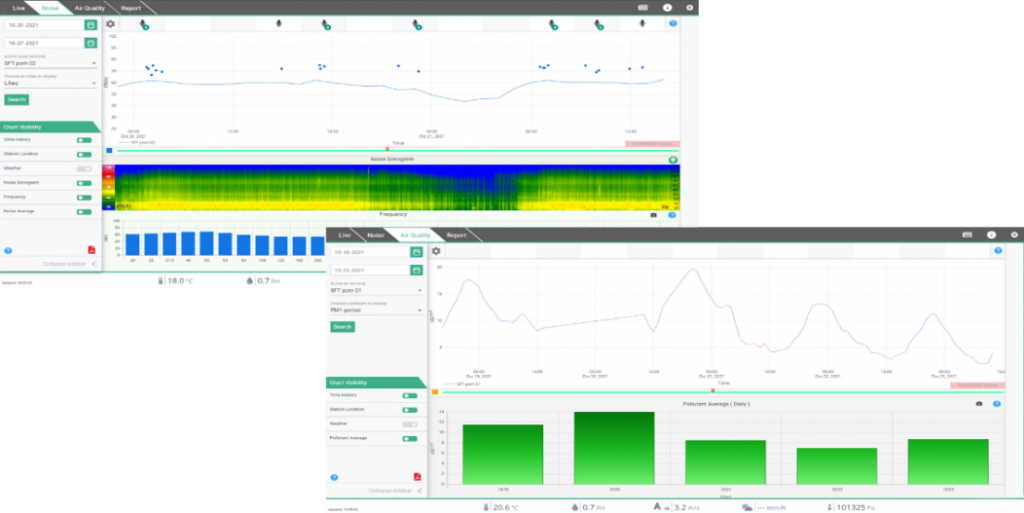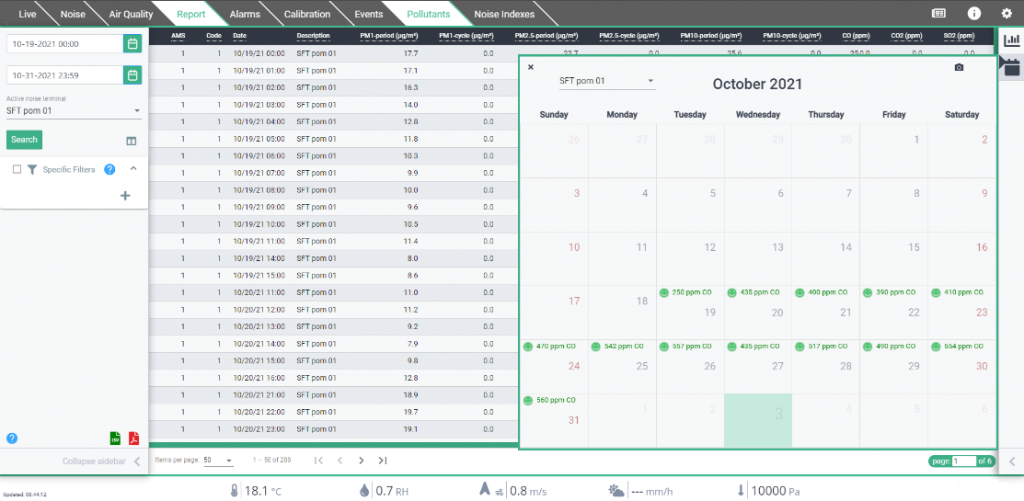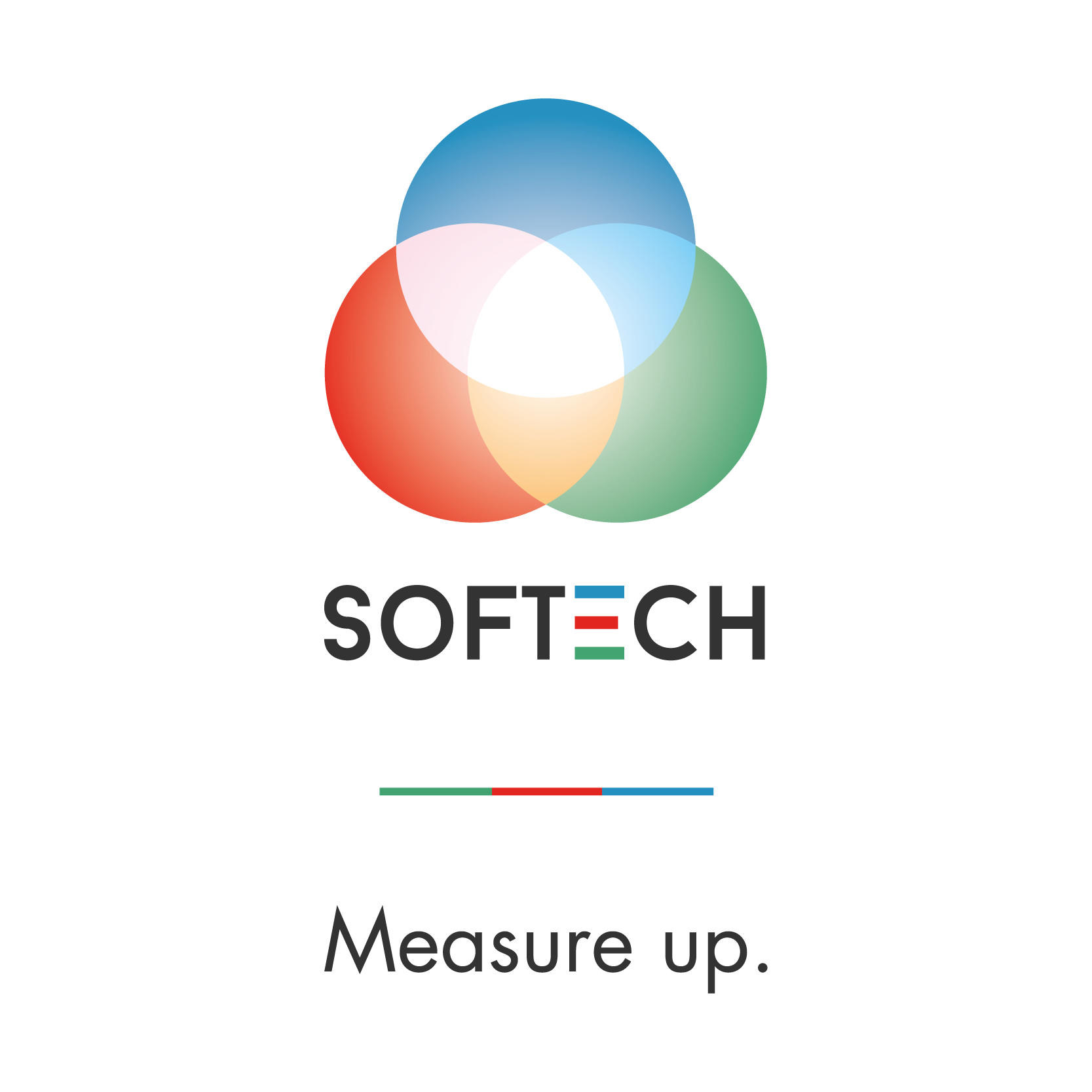Environment & building sites: perks of widespread monitoring
Dismantling, transformation, construction: these are some of the activities that characterize the site. By their very nature they are dynamic activities, which produce polluting emissions of a sound but also atmospheric type and whose effects affect the surrounding environment and the so-called “receptors”.
The Consolidated Safety Act (Legislative Decree 81/08) provides that the employer assesses all the risks resulting from the exposure of the so-called recipients to physical agents, including noise and vibrations.
The permanent decrease in hearing capacity or hearing loss due to noise is the best known of the effects due to prolonged exposure over time to high noise levels and is still one of the most widespread occupational diseases today.
For this reason, art. 183 of the same decree, establishes that “Taking into account technical progress and the availability of measures to control the risk at source, the risks deriving from exposure to physical agents are eliminated at source or reduced to a minimum“.
However, noise is not the only danger for the exposed subjects; Among the atmospheric pollutants, PM 10 and PM 2.5 are certainly the best known in the construction sector. It is particulate matter, or particles of more or less fine dust generated by the processes which, dispersing in the air, create a mixture (“atmospheric aerosol”) with the liquid particles there suspended.
The most serious effects of prolonged exposure to PM10 and PM2.5 include respiratory disorders such as cough and phlegm, asthma, decreased lung capacity, decreased respiratory function and chronic bronchitis; to these are added effects on the cardiovascular system and even a greater risk of respiratory tract-cancers.
Defining and implementing an adequate monitoring plan is therefore essential to know the real environmental impact of work activities, but also (and above all) to ensure a safe working environment.
The benefits of widespread monitoring
In most construction sites, the environmental monitoring plan already provides for environmental monitoring to be conducted at specific points and with specific instruments, which allow for very precise but localized information.
With the aim of making safety procedures more efficient, a capillary monitoring network would be desirable. Knowing the situation of the entire construction site area and not just some areas of it, would allow greater safety, a better perception of the working environment, but also an efficiency of time and costs, reducing the risk of sanctions, costs health, suspension of activities.
Smart solutions are currently available on the market, They integrate the certified detection network with low-cost sensors, creating a more or less widespread network according to needs.
SOFTECH has a solution
In Softech, we have developed a cloud solution, specifically designed for construction sites; the indoor / outdoor monitoring network, which can be extended according to needs, is equipped with a consultation and analysis portal and a warning-threshold exceeding and reporting system.
Designed for non-technical personnel, it guarantees ease of use thanks to the simple and intuitive man / machine interface.
–> The “LIVE” module
it allows the real-time visualization of:

- Noise and Air Quality level
- Weather condition graphs
- Detail of the monitoring stations with real-time graphs
- With an adequately equipped station, it is possible to listen to the noise measurements live
It can take on the characteristics of an info sharing module with the client, employees and / or territorial stakeholders.
–> Analysis module
It allows a detailed analysis of the situation and can be used by specialized personnel in order to identify critical situations (even if only potential) to be monitored in detail and / or to activate timely and adequate countermeasures. Among the functions:

- Time- History of noise / air and weather events
- Sonogram and frequency graphs
- Graphic analysis of environmental air quality parameters
- Average graphs
- Time-history of positioning and relocation of the control units
–> Report & Alert module
Lastly, the system allows the setting of alert-thresholds exceeded and the automatic and personalized creation of detailed reports.

The reports can also be shared directly with the Contracting Authority or the control body in charge.
It is composed by:
- Standard and customizable reports creating tool
- Report tabs: Events, Alarms, Calibration, Indices
- Tabular and calendar display
- Data, reports and graphs can be exported in the most common formats (xlsx, PDF, PNG, etc.)
The alert function, on the other hand, when predefined thresholds for the detected levels are exceeded (thresholds that can be defined during the configuration phase and in agreement with the Contracting Authority), sends alerts to the personnel in charge via SMS or email, allowing timely intervention.
So, what’s stopping you?
Download the brochure and email to marketing@softechweb.it or sales@softechweb.it to require a free demo!
Leggi le altre news
Highway Control Room: Where Mobility Takes Shape
The highway control room is the operational nerve center of motorway management — the place where information converges, strategic decisions are made, and mobility is coordinated in real time. In this environment, technology plays a critical role, enabling continuous monitoring, fast communication, and efficient traffic control. Advanced Monitoring Systems Inside the control room, operators rely […]
SARA-NOISE AT TURIN CASELLE INTERNATIONAL AIRPORT
The airport management company SAGAT SpA chooses our systems for noise monitoring and analysis. To monitor aircraft noise emissions, SAGAT Spa has chosen to rely on our SARA system. SARA is the Softech solution for monitoring and analyzing environmental parameters (noise, air quality, weather) at the airport. Equipped with highly specialized analysis software and monitoring […]
G-SMART: ADR – Aeroporti di Roma chooses our system for IoT monitoring and benchmarking of trolley collection areas.
An IoT infrastructure for the active and continuous monitoring of the trolley collection areas at Fiumicino International Airport. G-SMART is the GSE tracking system that combines different technologies (RFID, Bluetooth, ADS-B, GPS) to create the best performing solution depending on the application scenario. IPS – indoor positioning systems – are systems that allow objects to […]


